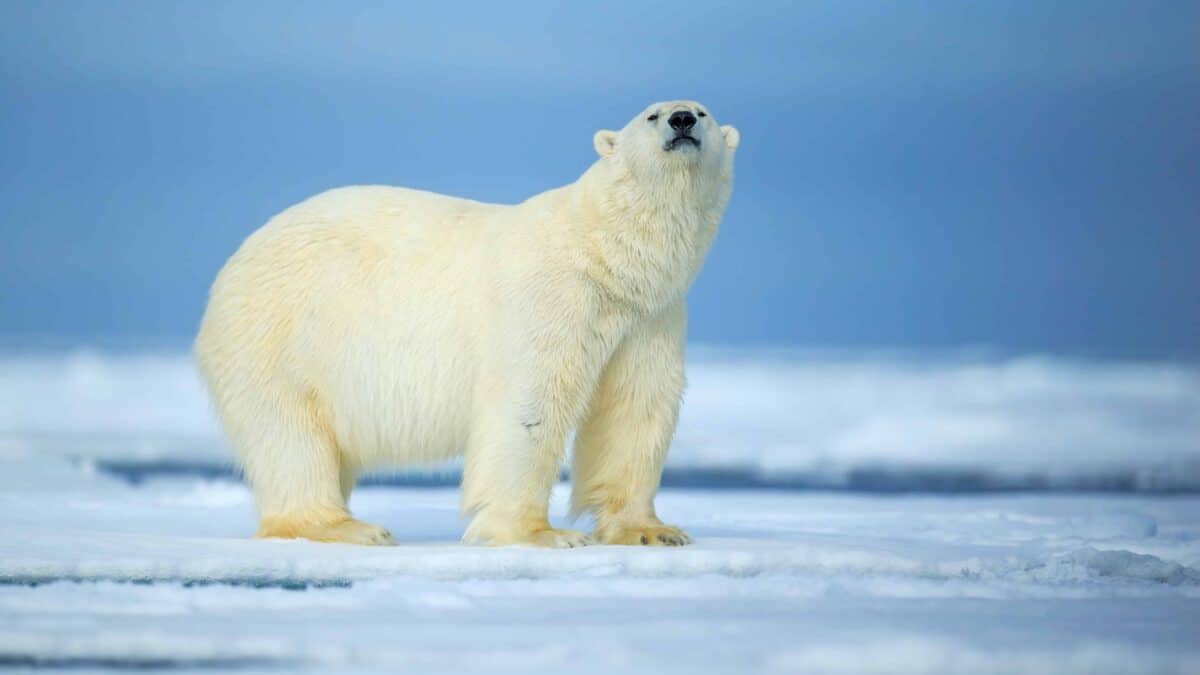The polar bear (Ursus maritimus) stands as an iconic symbol of the Arctic—a region characterized by freezing temperatures, biting winds, and months of darkness. As the world’s largest land carnivore, these magnificent creatures have evolved over thousands of years to not just survive but thrive in one of Earth’s most extreme environments. Adult males typically weigh between 775 and 1,200 pounds (350-600 kg), while females are smaller at 330-550 pounds (150-250 kg), giving them the mass needed to conserve heat in frigid conditions.
What makes polar bears truly remarkable is their specialized adaptation to a habitat that would be lethal to most other mammals. Living primarily on sea ice in the Arctic Circle, these bears face temperatures that regularly plummet to -40°F (-40°C) and can drop even lower during the harsh winter months. Their survival in this unforgiving landscape is a testament to the power of evolutionary adaptation and biological specialization, making them one of nature’s most impressive success stories in extreme climate survival.
Built-in Insulation: The Polar Bear’s Coat

A polar bear’s iconic white coat serves as much more than camouflage—it’s a sophisticated insulation system. Unlike what many believe, polar bear fur isn’t actually white; each hair is transparent and hollow, reflecting visible light to create the white appearance we observe. This hollow structure serves a crucial purpose: it traps heat near the body while the transparent nature allows sunlight to reach and warm the bear’s black skin, which absorbs solar heat efficiently. The fur is so effective that polar bears sometimes overheat during vigorous activities, even in freezing temperatures.
Beneath this remarkable fur lies a layer of blubber that can reach 4.5 inches (11.5 cm) thick. This dense fat layer provides both insulation and an energy reserve during periods when food is scarce. The combination of hollow fur and thick blubber creates such an effective thermal barrier that polar bears are nearly invisible on infrared cameras, as almost no body heat escapes to the surface. Scientists studying this insulation system have drawn inspiration from it to develop more efficient building insulation and cold-weather gear for humans.
Specialized Paws for Ice Navigation
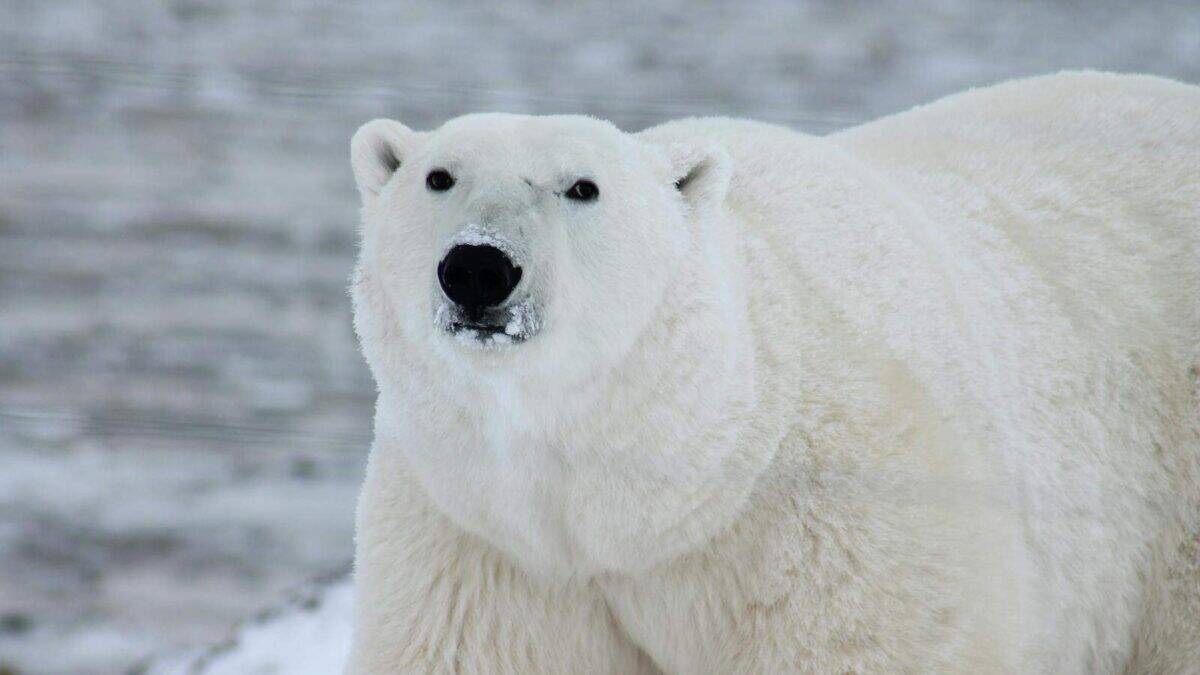
Polar bear paws are engineering marvels perfectly adapted for Arctic life. Measuring up to 12 inches (30 cm) in diameter, these oversized paws distribute the bear’s substantial weight across snow and thin ice, functioning similarly to snowshoes. This adaptation prevents them from breaking through ice and sinking into deep snow, allowing them to traverse their frozen habitat with remarkable efficiency. The large surface area also makes them powerful swimming paddles, essential for a species that spends significant time navigating between ice floes.
The undersides of polar bear paws feature specialized adaptations for traction. Small papillae (bumps) and footpads covered with small, soft dermal bumps provide crucial grip on slippery ice. Their partially webbed toes enhance swimming ability while maintaining dexterity for hunting. Perhaps most fascinating are their non-retractable claws—thick, curved, and measuring about 2 inches (5 cm) long—which serve multiple functions: gripping slippery prey, gaining traction on ice, and digging through snow to reach seal dens. This combination of features creates the perfect multifunctional tool for life in the Arctic, allowing polar bears to hunt, swim, and traverse their challenging environment with remarkable adaptability.
Metabolic Adaptations for Extreme Cold

Polar bears possess remarkable metabolic adaptations that enable them to thrive in Arctic conditions. Their basal metabolic rate is carefully regulated to conserve energy during periods of food scarcity while still maintaining the necessary warmth for survival. Unlike many other bear species, polar bears don’t undergo true hibernation. Instead, they enter a state called “walking hibernation” during food-scarce periods, where their metabolism slows by about 27% while they remain active. This energy conservation strategy is crucial for surviving the unpredictable food availability in the Arctic environment.
Their digestive system is highly specialized for their carnivorous diet, capable of processing and storing massive amounts of calorie-dense fat. When a polar bear consumes a seal, it can digest and store nearly 84% of the protein and 97% of the fat from its meal—an extraordinarily efficient system that maximizes caloric intake. This efficiency becomes critical when we consider that a polar bear might consume up to 100 pounds (45 kg) of seal fat in a single sitting, storing this energy in their own blubber layer to sustain them through periods when hunting is challenging. Their liver has also evolved to process these massive fat quantities without the toxic effects that would occur in other mammals, demonstrating the comprehensive nature of their metabolic adaptations.
Masters of Marine Hunting
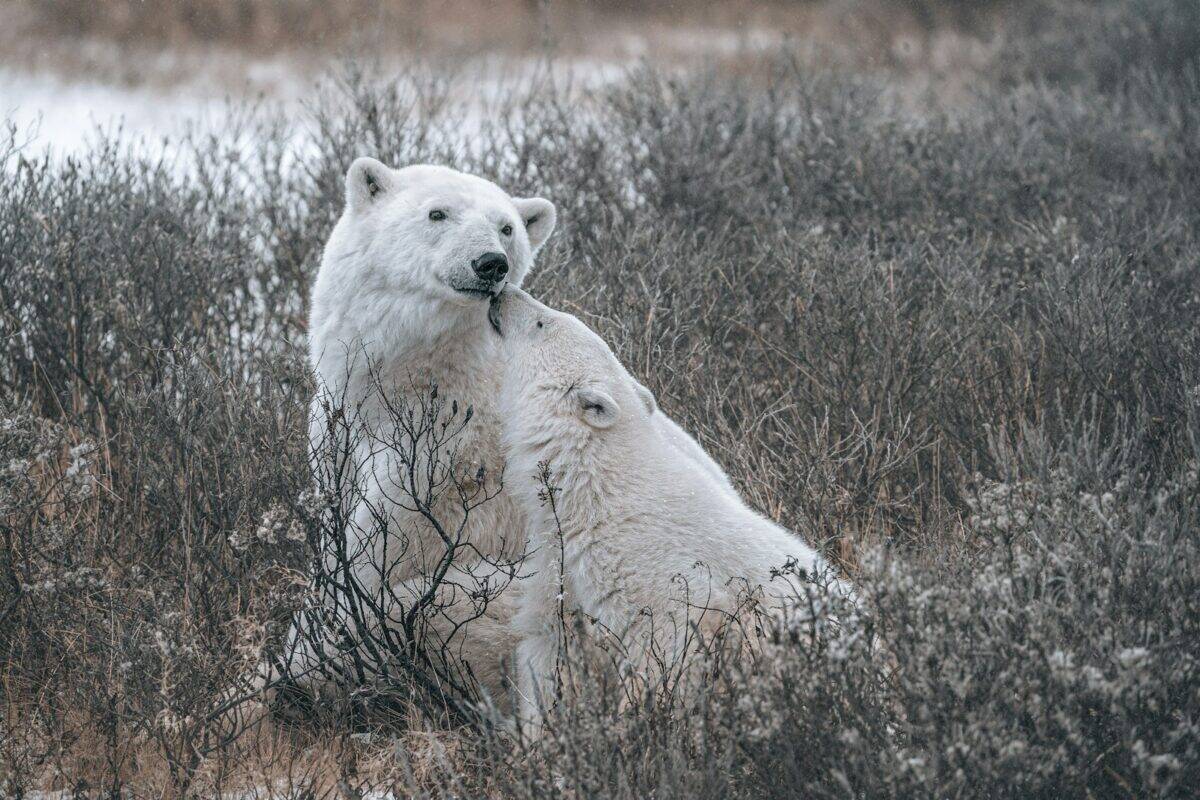
Polar bears are the only bear species classified as marine mammals, a designation that reflects their intimate relationship with the sea ice environment. Their hunting strategy revolves primarily around ringed and bearded seals, which comprise about 98% of their diet. Unlike other bears, polar bears have evolved specialized hunting techniques for capturing these marine mammals. The most common method, known as “still hunting,” involves the bear waiting motionlessly beside a seal’s breathing hole in the ice, sometimes for hours, before striking with lightning speed when the seal surfaces to breathe. Their sense of smell is so acute they can detect seals beneath 3 feet (1 meter) of compacted snow or ice, or from up to a mile away.
Their swimming abilities further enhance their hunting prowess. Polar bears can swim continuously for days, with documented cases of individuals swimming more than 200 miles (320 km) without rest. While swimming, they use their front paws as powerful paddles while keeping their hind legs flat as rudders, achieving speeds up to 6 mph (10 kph). This aquatic ability allows them to navigate between ice floes and even hunt in open water, though this is less energy-efficient than hunting from ice platforms. As climate change reduces sea ice coverage, polar bears must swim longer distances between hunting grounds, increasing their energy expenditure and making their specialized hunting techniques less effective—one of many challenges facing this remarkable species in a rapidly changing Arctic.
Surviving the Polar Night

The Arctic experiences a phenomenon known as polar night, where the sun doesn’t rise above the horizon for weeks or months, depending on latitude. In the northernmost regions of the polar bear’s range, this darkness can last for over 100 days. Unlike humans, who would struggle to function in such conditions, polar bears navigate this extended darkness with ease thanks to their highly developed senses. Their exceptional night vision, enhanced by a reflective layer behind the retina called the tapetum lucidum, allows them to maximize available light, even the faint illumination from the moon and stars.
During the polar night, polar bears rely primarily on their acute sense of smell to locate prey and navigate. They can detect scents from remarkable distances—up to 20 miles (32 km) away in ideal conditions—and can smell seals through thick ice. This ability becomes critical during the dark period, essentially allowing them to “see” with their nose. Additionally, their whiskers (vibrissae) serve as sensitive touch receptors that help them navigate in darkness and detect subtle movements of prey. Rather than hibernating through this challenging period, polar bears remain active, hunting and surviving through the darkness with a suite of sensory adaptations that turn what would be a limitation for most species into just another condition they’re well-equipped to handle.
Reproduction in the Cold

Breeding in the Arctic presents unique challenges, and polar bears have evolved reproductive strategies specifically adapted to their harsh environment. Female polar bears experience delayed implantation, where fertilized eggs remain dormant until autumn when the female has accumulated sufficient fat reserves. This allows the timing of pregnancy to align with optimal environmental conditions. Pregnant females then create maternity dens by digging into snowdrifts or permafrost banks, creating shelters where temperatures can remain a relatively warm 32°F (0°C) despite external temperatures dropping below -40°F (-40°C).
Polar bear cubs are born incredibly small—weighing only about 1.3 pounds (600 grams) at birth, roughly 1/500th of their mother’s weight. This small size allows females to give birth even during winter fasting periods when they may lose up to 43% of their body weight. The cubs develop rapidly on their mother’s rich milk, which contains approximately 31% fat (compared to human milk at 3-5%), allowing them to quickly build the insulating fat layer necessary for Arctic survival. By the time they emerge from the den in spring, cubs typically weigh 20-30 pounds (9-14 kg) and have developed the fur and fat necessary to withstand the cold. This precisely timed reproductive cycle represents another remarkable adaptation to one of Earth’s most challenging environments.
Behavioral Adaptations to Arctic Life

Polar bears demonstrate a range of behavioral adaptations that complement their physical traits for Arctic survival. One of their most notable behaviors is energy conservation—polar bears carefully balance activity with rest to maintain their thermal equilibrium. They often travel at a slow, methodical pace of about 3.5 mph (5.6 kph), which reduces heat production and energy expenditure. When inactive, they may dig shallow pits in snow or ice to shield themselves from wind, or rest in areas sheltered by pressure ridges in the ice, behaviors that significantly reduce heat loss.
Their grooming behavior also plays a crucial role in maintaining their insulation. Polar bears regularly clean their fur to preserve its insulating properties, removing ice and salt that would otherwise reduce its effectiveness. They’ve also been observed using snow as a cleaning agent, rubbing in it to remove oils and debris from their fur. After swimming, polar bears vigorously shake excess water from their fur and roll in snow—a behavior that helps dry their outer layer quickly and prevents ice formation that would compromise insulation. These seemingly simple behaviors represent sophisticated adaptations that help polar bears maintain their internal temperature and energy balance in an environment where margins for error are extremely narrow.
The Challenge of Seasonal Fasting
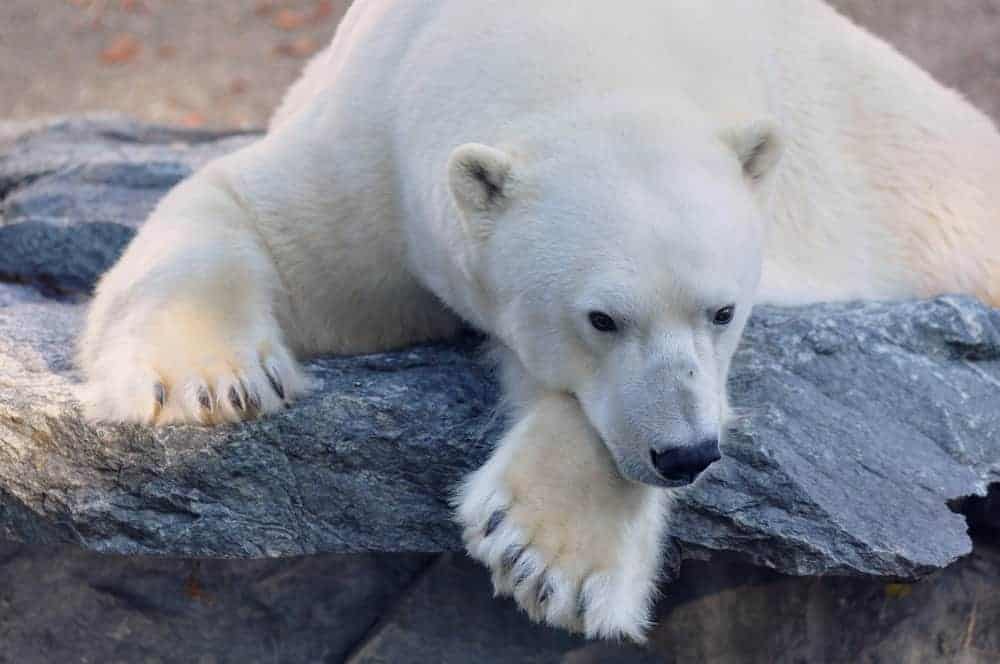
One of the most remarkable survival adaptations of polar bears is their ability to endure extended fasting periods. In many parts of the Arctic, summer sea ice melt forces bears onto land where hunting opportunities are severely limited. During these periods, which can last 3-5 months, polar bears may enter a state of “walking hibernation,” reducing their metabolic rate while remaining active. Studies show they can lose up to 2.2 pounds (1 kg) of body mass per day during these fasting periods, primarily from their substantial fat reserves, while preserving muscle tissue through specialized metabolic processes.
Female polar bears face an even greater challenge during pregnancy and early lactation. When a pregnant female enters her maternity den in autumn, she may not eat or drink for up to eight months—one of the most extended fasting periods of any mammal. During this time, she gives birth and produces rich milk for her rapidly growing cubs, all while drawing solely on her stored fat reserves. Her body undergoes remarkable physiological changes, including recycling urea (normally a waste product) into proteins, and maintaining hydration by metabolizing fat which produces water as a byproduct. These adaptations allow polar bears to survive extended food scarcity in a way few other large mammals could, demonstrating the extraordinary lengths to which their physiology has evolved to meet the challenges of their extreme environment.
Thermoregulation: Keeping Cool in the Cold
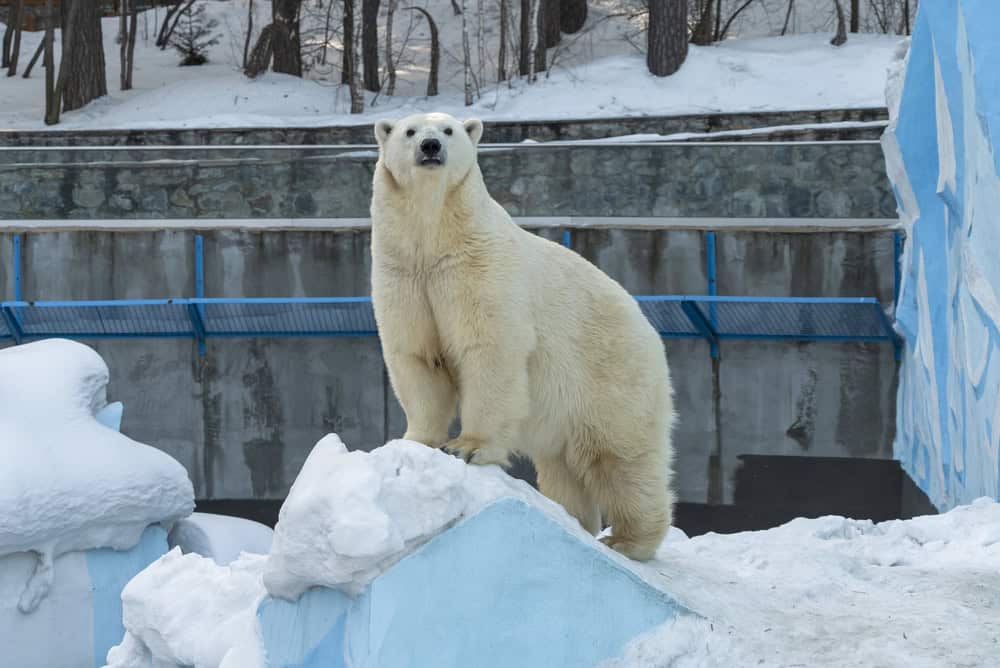
Counterintuitively, one of the major challenges polar bears face is not getting too cold, but avoiding overheating. Their insulation is so effective that during active periods like hunting or traveling, they risk hyperthermia even in sub-zero temperatures. To manage this, polar bears have evolved sophisticated thermoregulation mechanisms. Their elongated body shape and limbs increase surface area relative to volume, facilitating heat dissipation when needed. They often walk with a distinctive gait that minimizes muscular heat production, and will lie on their backs with limbs extended to increase heat loss or press their less-insulated muzzles against the ice to cool down.
The bears also utilize behavioral thermoregulation strategies, including swimming to cool down and limiting vigorous activity to cooler periods of the day. Their bodies feature specialized heat exchange systems, particularly in their paws, where arterial blood is cooled by venous blood returning from the extremities in a countercurrent heat exchange system. This prevents excessive heat loss from extremities while allowing sufficient circulation to maintain tissue health. Perhaps most remarkably, their nasal passages contain specialized turbinate bones with extensive surface area that recover moisture and heat from exhaled air, minimizing respiratory heat loss in cold conditions while also providing cooling when needed. This balanced approach to thermoregulation allows polar bears to maintain optimal body temperature despite extreme external conditions and varying activity levels.
Climate Change: The Greatest Threat

Despite their remarkable adaptations, polar bears face an unprecedented challenge in climate change. Arctic temperatures are rising at twice the global average rate, causing sea ice—the platform from which polar bears hunt their primary prey—to form later, break up earlier, and cover less area overall. Research shows that the Arctic has lost approximately 13% of its sea ice per decade since the late 1970s, with catastrophic implications for polar bear populations. Without adequate ice hunting platforms, bears must swim longer distances between feeding areas, expending precious energy reserves and increasing the risk of drowning, especially for cubs.
The consequences of these changes are already evident. In areas experiencing the most severe ice loss, such as the Southern Beaufort Sea and Western Hudson Bay, researchers have documented declining body conditions, lower reproduction rates, and decreased cub survival. A 2020 study published in Nature Climate Change projects that most polar bear populations could face reproductive failure by 2100 if current warming trends continue. With an estimated global population of only 22,000-31,000 individuals divided across 19 subpopulations, polar bears are classified as vulnerable on the IUCN Red List. The species that evolved such extraordinary adaptations to master Earth’s coldest environments now finds those same specialized traits becoming liabilities in a rapidly warming world, underscoring the urgent need for climate action to preserve this remarkable species.
Conclusion: Nature’s Arctic Specialists

Polar bears represent one of nature’s most impressive examples of specialized adaptation, having evolved a comprehensive suite of physical, physiological, and behavioral traits that allow them to thrive in conditions few other large mammals could survive. From their sophisticated insulation systems and specialized hunting techniques to their remarkable fasting abilities and reproductive strategies, every aspect of the polar bear’s biology reflects millions of years of evolutionary refinement for Arctic life. Their mastery of the sea ice environment demonstrates nature’s extraordinary capacity for specialization in extreme conditions.
Yet this same specialization now places them at particular risk in our changing world, as the Arctic environment transforms more rapidly than at any point in the polar bear’s evolutionary history. The plight of the polar bear serves as both a powerful reminder of nature’s adaptability and a sobering warning about the limits of even the most remarkable adaptations in the face of rapid environmental change. As we marvel at the polar bear’s extraordinary capacity to survive in one of Earth’s harshest climates, we must also recognize our responsibility to preserve the conditions that allow these magnificent Arctic specialists to continue their remarkable existence for generations to come.
The story of the polar bear is ultimately one of resilience and vulnerability—a species that conquered one of Earth’s most challenging environments through remarkable adaptation, now facing its greatest test as that environment undergoes unprecedented transformation. Their future remains uncertain, but by understanding and appreciating the extraordinary ways these animals survive in the Arctic, we gain not only scientific knowledge but also powerful motivation to protect both the bears and their irreplaceable frozen world.
As we look toward the future, the polar bear stands as both an inspiration—showing what’s possible through evolutionary adaptation—and a challenge, asking whether humans can adapt our own behaviors quickly enough to ensure this Arctic marvel continues to roam the sea ice, hunting, swimming, and raising cubs as it has done for thousands of years across the frozen top of our planet.
- How Climate Change Is Bringing More Deadly Animals to the US - August 20, 2025
- The Only Mammal That Can Breathe Through Its Skin - August 19, 2025
- How to Win Over Judges in Dressage Competitions - August 19, 2025

